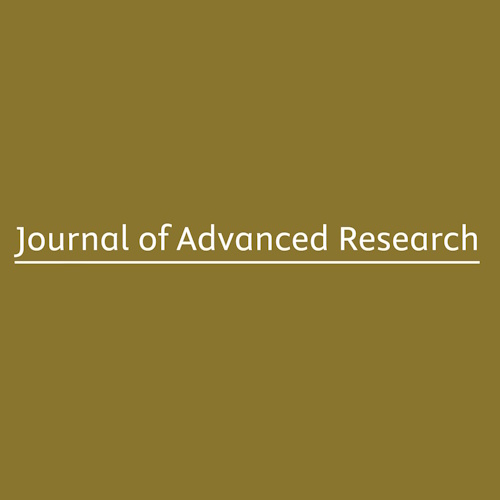What if your blood could whisper the story of your life’s journey—not through DNA, but through the proteins it carries? And what if that story didn't align with the number of candles on your birthday cake, but instead revealed your biological age—the true wear and tear your body has endured? Scientists are now tuning in to this quiet symphony, using the tools of plasma proteomics to map the shifting landscape of human ageing. The latest study, involving over 50,000 participants, dives deep into these protein patterns, uncovering the rhythm and meaning of our biological transitions.
This vast research effort, grounded in the UK Biobank data, examines nearly 3,000 blood proteins and their connections to how well—and how long—we live. Rather than treating ageing as a linear decline, the study reveals it as a complex and undulating process, marked by key transitions at specific life stages. Through this lens, proteins emerge not just as markers but as potential levers for influencing how we age.
Decoding the Biology of Biological Age
Chronological age is straightforward. It measures how many years you've lived. But biological age asks a more nuanced question: how old is your body really? This study shifts focus from just counting years to tracking how proteins change in the blood over time. These proteins reflect inflammation, stress, repair mechanisms, and more. They are the molecular echoes of lifestyle, disease, and genetic predisposition.
The researchers linked protein levels to nine critical ageing-related traits: PhenoAge, KDM-biological age, telomere length, frailty, parental lifespan, longevity, and healthspan. These traits span across physical condition, disease risk, and inherited longevity. The team used advanced statistical models to find which proteins were most consistently associated with these outcomes. Their findings don’t just confirm previous theories—they add new chapters.
Three Biological Peaks in the Arc of Ageing
One of the most striking discoveries of the study was that proteomic changes during ageing don’t occur steadily. Instead, they spike at three specific points: at biological ages 41, 60, and 67. At each point, different protein groups surge or decline. These "waves" were observed in the overall population, in individual organs, and even when split by sex.
The 41-year wave is particularly intriguing. It suggests that biological ageing begins well before most people notice physical decline. This early phase involves changes in immune, metabolic, and cell signalling pathways. The 60-year wave coincides with major hormonal shifts—especially menopause. It also reflects increased stress on cardiovascular and immune systems. Finally, the 67-year peak appears linked to inflammation and cellular repair systems, likely foreshadowing age-related diseases.
Inside the Plasma: Proteins That Push or Protect
Among the 2,923 proteins analysed, 227 were strongly associated with all nine ageing traits. Most of these proteins promote ageing. However, two—PON3 and UMOD—stood out as protective. PON3, an antioxidant protein, protects against cardiovascular damage. UMOD helps maintain kidney function and reduces systemic inflammation. Both show promise as therapeutic targets.
Other proteins, such as EGFR and NTRK3, showed dual roles. While they supported tissue repair in some contexts, they were also linked to accelerated biological ageing in others. These complex behaviours suggest that proteins often play multiple roles, depending on age, health status, and even sex.
Different Organs, Same Story of Decline
When the scientists looked at how proteins changed in specific organs, they found similar waves of ageing-related shifts. The lungs aged more slowly, with changes peaking at 60 and 65. In contrast, immune, brain, and gut tissues showed sharp shifts as early as age 44. The patterns suggest a common mechanism behind organ ageing, yet the timing differs.
These insights open doors to early intervention. If researchers can predict when certain organs begin to decline, targeted therapies may slow down or reverse that process. For instance, a therapy addressing immune ageing at 41 might delay the onset of frailty or inflammatory diseases later in life.
Women and Men Show Distinct Ageing Rhythms
Sex plays a crucial role in ageing biology. When the researchers separated data by sex, they uncovered dramatic differences. For women, a steep proteomic change occurred around age 49—aligning with menopause. This shift came with a drop in protective proteins and a rise in inflammatory markers. It paints a picture of accelerated ageing tied closely to hormonal shifts.
In men, the changes were more gradual. Their proteomic curves rose and fell at ages 46, 56, and 67. This less abrupt pattern may reflect slower hormonal decline. Despite these differences, both sexes shared a final peak at 67, suggesting a universal late-life biological tipping point.
Five Proteins That Matter Most in Healthy Ageing
Out of all the proteins studied, five emerged as particularly important: CXCL13, DPY30, FURIN, IGFBP4, and SHISA5. These weren’t just correlated with ageing—they appeared to play a causal role.
CXCL13, for instance, is tied to neuroinflammation and cognitive decline. It’s found in higher amounts in Alzheimer’s disease and worsens with age. DPY30 affects gene regulation and cell division. Its loss leads to cell senescence—a key driver of ageing. FURIN, involved in protein processing, disrupts kidney function when misregulated. IGFBP4 is secreted by aged cells and can drive inflammation systemically. SHISA5, linked to the p53 stress response pathway, regulates cell death and ageing-related damage.
From Risk Factors to Proteins to Ageing
The study didn’t stop at identifying proteins. It also examined how lifestyle risks—like poor heart health—change protein levels. In turn, these proteins drive ageing. One measure, called LE8, reflects cardiovascular metabolic health. SHISA5, for example, mediated nearly half the ageing effect tied to poor LE8 scores. This means managing your blood pressure or cholesterol could reduce harmful proteins—and slow biological ageing.
Such findings support the growing idea that lifestyle can shape biology deeply, even down to molecular signatures in the blood.
Ageing Is an Inflammatory Journey
Many ageing-related proteins were enriched in inflammation pathways. These include cytokine signalling, death receptor activity, and immune cell migration. Inflammation seems to be the main conductor in the ageing orchestra, playing loudly during every biological peak. This explains why anti-inflammatory drugs like metformin and rapamycin are being explored as anti-ageing treatments.
By calming these inflammatory waves, we might reduce the damage ageing causes across organs—from heart to brain.
The Brain Ages with the Body, But Leads the Drama
Brain tissue showed distinct proteomic signatures in this study. The cerebral cortex and frontal regions had marked protein changes. Proteins like SYNPR and GRIN2A—linked to neurotransmission—were altered with age. Their dysregulation has been tied to Alzheimer’s and Parkinson’s. This supports the theory that ageing in the brain precedes visible cognitive decline and that blood biomarkers could act as early warning signals.
Therapies that target these brain-specific proteins could prevent or delay age-related memory loss.
A Multi-Trait Map for Ageing Research
Unlike earlier studies, which focused on just one ageing trait at a time, this work covered nine. That allowed the team to identify shared proteins across healthspan, frailty, longevity, and more. It offers a more complete picture of ageing biology. In total, 12,193 significant associations were discovered—far more than in previous research.
This multi-trait map could become a guidebook for developing treatments, tailoring interventions, and even predicting who will age well.
Conclusion: Mapping Time Through Proteins
Ageing is not a straight path. It is a landscape of rises and falls, shaped by immune shifts, stress responses, and the quiet signals of our cells. By listening to proteins in plasma, we begin to understand that map.
With markers like CXCL13 and SHISA5, scientists may soon tell how fast someone is ageing—and step in before disease strikes. The peaks at ages 41, 60, and 67 show where that intervention might matter most. These insights do more than reveal the biology of decline. They offer hope that we can change the tempo of time itself.
The study is published in the Journal of Advanced Research. It was led by researchers from Fudan University.






